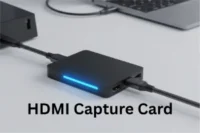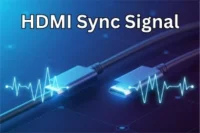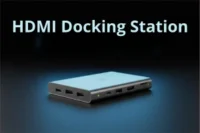10+ Types of HDMI Switches: Explained
Published: 17 Sep 2025
Various types of HDMI switches are available today to help users connect multiple devices to a single display without the hassle of constantly swapping cables.
Whether you’re setting up a home theater system or organizing your work desk, choosing the right HDMI switch depends on your needs. In this article, we’ll explore different types of HDMI switches commonly used to simplify digital connectivity.
So, let’s get started!
Types of HDMI Switches
There are different varieties of HDMI switches available. After doing all my research in the market, the list of all the 12 primary HDMI switch types is:
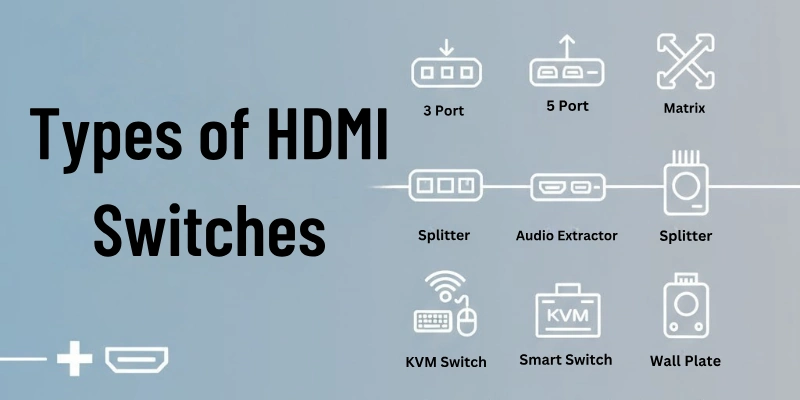
- Manual HDMI Switch
- Automatic HDMI Switch
- Remote-Controlled HDMI Switch
- Wireless HDMI Switch
- Bi-Directional HDMI Switch
- HDMI Switch with Picture-in-Picture (PiP)
- HDMI Switch with Audio Extraction
- HDMI Switch with ARC (Audio Return Channel) Support
- HDMI Switch with HDR Support
- HDMI Switch with EDID Management
- HDMI Switch with USB-C or Type-C Input
- High-Resolution HDMI Switch
Let us learn about each in detail.
1. Manual HDMI Switch
A Manual HDMI Switch is a simple device. It lets you connect many HDMI devices to one display. You change the input by pressing a button on the switch.
How Does It Work?
Here is how the manual switch works:
- It has a physical button.
- You press the button to choose which device you want to use.
- It does not switch automatically.
- You control it by hand only.
Power Requirement
Manual HDMI switch power requirements are:
- It does not need electricity or batteries.
- It works without any power source.
- You just plug in the HDMI cables and use it.
Number of Ports
The number of ports available in manual switch is:
- Most manual switches come with 2 or 3 input ports.
- One output port connects to the display.
Use Cases
Manual HDMI switches are best for:
- It is good for small setups.
- It works well in homes or offices with few devices.
- It is best when you do not need to switch inputs often.
Pros
The advantages of manual HDMI switches are:
- Very easy to use
- No remote needed
- No power needed
- Budget-friendly
Cons
Limitations of manual HDMI switches are:
- You must press the button every time
- Not good for people who want remote use
- Limited to basic features only
2. Automatic HDMI Switch
An Automatic HDMI Switch is a smart device. It connects multiple HDMI devices to one display. It changes the input source automatically when a new device is turned on.
How Does It Work?
Here is how the automatic switch works:
- It detects which device is active.
- It switches the input to that active device.
- You do not need to press any button.
- It changes input by itself without manual control.
Power Requirement
Automatic HDMI switch power requirements are:
- Most automatic switches need a power source.
- Some get power from HDMI cables.
- Others may need a separate power adapter.
Number of Ports
The number of ports available in automatic switch is:
- Most automatic switches come with 2 to 5 input ports.
- One output port connects to the display.
Use Cases
Automatic HDMI switches are best for:
- People who use multiple devices often.
- Users who want a hands-free switching experience.
- Home entertainment setups where devices turn on/off frequently.
Pros
The advantages of automatic HDMI switches are:
- Hands-free switching
- Quick and smooth input change
- User-friendly
- Saves time and effort
Cons
Limitations of automatic HDMI switches are:
- Sometimes it selects the wrong device
- May not work well if all devices are active
- Some models still require power supply
3. Remote-Controlled HDMI Switch
A Remote-Controlled HDMI Switch is a device that allows you to switch between multiple HDMI inputs using a remote. It connects many HDMI devices to one display and lets you change the input from a distance.
How Does It Work?
Here is how the remote-controlled switch works:
- It has a small remote control.
- You press a button on the remote to select an input.
- You do not need to press a button on the switch itself.
- It uses an infrared (IR) signal to work.
Power Requirement
Remote-controlled HDMI switch power requirements are:
- Most remote-controlled switches need external power.
- They usually come with a power adapter.
- Some may also work through HDMI cable power, but not always.
Number of Ports
The number of ports available in remote-controlled switch is:
- Most switches offer 3 to 5 input ports.
- One output port connects to the TV or monitor.
Use Cases
Remote-controlled HDMI switches are best for:
- Home theaters and smart TV setups.
- People who want to switch inputs while sitting on the couch.
- Users who use different devices regularly.
Pros
The advantages of remote-controlled HDMI switches are:
- Easy to use from a distance
- No need to move or get up
- Convenient for large rooms or wall-mounted TVs
- Modern and user-friendly experience
Cons
Limitations of remote-controlled HDMI switches are:
- Needs power to work
- Remote can be lost or stop working
- Infrared may not work well if there is an obstacle
4. Wireless HDMI Switch
A Wireless HDMI Switch is a modern device that allows you to connect and switch between HDMI devices without using HDMI cables for input. It works using wireless technology and sends signals to the display wirelessly.
How Does It Work?
Here is how the wireless switch works:
- It uses wireless transmitters and receivers.
- The input device sends the HDMI signal through a transmitter.
- The receiver receives the signal and sends it to the display.
- You can switch between devices using a remote or automatically.
Power Requirement
Wireless HDMI switch power requirements are:
- Both transmitter and receiver need power.
- They usually come with USB or power adapters.
- They do not work without a power source.
Number of Ports
The number of ports available in wireless switch is:
- Some models allow 2 to 4 input devices.
- The output goes to one display through the receiver unit.
Use Cases
Wireless HDMI switches are best for:
- People who want a clean, cable-free setup.
- Wall-mounted TVs with hard-to-reach HDMI ports.
- Conference rooms, classrooms, or modern home setups.
Pros
The advantages of wireless HDMI switches are:
- No messy cables
- Easy to install and move
- Modern and stylish look
- Great for presentations and clean setups
Cons
Limitations of wireless HDMI switches are:
- Can be expensive
- May face signal delay or interference
- Requires power for all units
5. Bi-Directional HDMI Switch
A Bi-Directional HDMI Switch is a special type of switch. It can work in two ways. You can use it to switch between two input devices to one display, or one input device to two displays (one at a time).
How Does It Work?
Here is how the bi-directional switch works:
- It has two input/output ports and one output/input port.
- You can use it as an input switch (2 devices → 1 display).
- Or you can use it as an output switch (1 device → 2 displays).
- You press a button to switch between the ports.
Power Requirement
Bi-directional HDMI switch power requirements are:
- It usually does not need external power.
- It works through HDMI cable power.
- No batteries or adapters are needed in most cases.
Number of Ports
The number of ports available in bi-directional switch is:
- Mostly it has 2 HDMI ports and 1 HDMI port.
- You use two as input/output and one as output/input, depending on your need.
Use Cases
Bi-directional HDMI switches are best for:
- People who want one device to work with two screens (not at the same time).
- Users who want to use two devices with one display.
- Basic home or office setups.
Pros
The advantages of bi-directional HDMI switches are:
- Works both ways (input switch or output switch)
- No power needed
- Simple and affordable
- Easy to use with a button
Cons
Limitations of bi-directional HDMI switches are:
- You can use only one display at a time
- No remote control
- Limited to 2 ports only
- Not suitable for advanced setups
6. HDMI Switch with Picture-in-Picture (PiP)
An HDMI Switch with Picture-in-Picture (PiP) allows you to view two HDMI inputs on the screen at the same time. One input shows as the main screen, and the other shows as a small window.
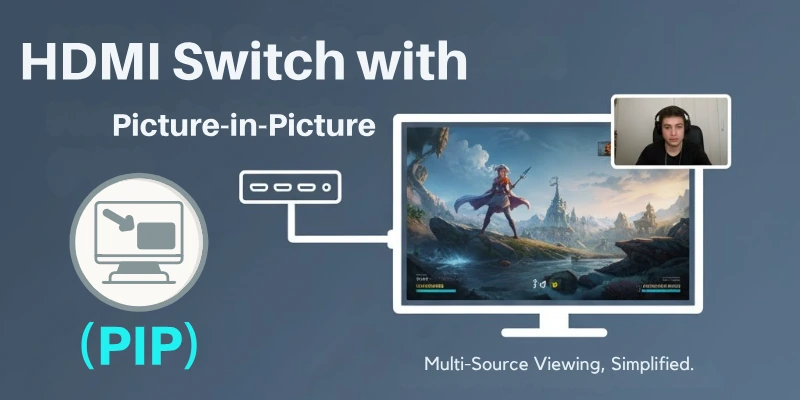
How Does It Work?
Here is how the PiP HDMI switch works:
- It connects multiple HDMI devices to one display.
- One input shows full-screen video.
- Another input shows in a small window (PiP mode).
- You can switch the main screen and the small window easily.
Power Requirement
PiP HDMI switch power requirements are:
- It needs external power to work.
- Most switches come with a power adapter.
- It cannot work without electricity.
Number of Ports
The number of ports available in PiP switch is:
- Most PiP switches offer 2 to 4 input ports.
- One output port connects to the display.
Use Cases
PiP HDMI switches are best for:
- Watching two sources at the same time.
- Gaming and streaming setups.
- Security camera monitoring and presentations.
Pros
The advantages of PiP HDMI switches are:
- Watch two inputs at once
- Switch easily between screens
- Great for multitasking
- Useful for professional setups
Cons
Limitations of PiP HDMI switches are:
- Needs power to work
- Can be costly
- Not all content supports PiP mode
- May require remote or menu settings
7. HDMI Switch with Audio Extraction Feature
An HDMI Switch with Audio Extraction Feature lets you separate the audio from the HDMI signal. It allows you to send video to a display and audio to speakers or sound systems.
How Does It Work?
Here is how the audio extraction switch works:
- It connects multiple HDMI devices to one display.
- It has extra audio output ports like Optical, AUX, or RCA.
- It sends video to your screen.
- At the same time, it sends audio to external speakers or soundbars.
Power Requirement
Audio extraction HDMI switch power requirements are:
- It needs external power.
- A power adapter is usually included.
- It does not work without electricity.
Number of Ports
The number of ports available in this switch is:
- Usually 2 to 5 HDMI input ports.
- One HDMI output port for the display.
- One or more audio output ports for speakers (Optical, AUX, or RCA).
Use Cases
Audio extraction HDMI switches are best for:
- Connecting TV with home theater sound.
- Sending video to TV and sound to external speakers.
- Audio setups that need better sound quality.
Pros
The advantages of audio extraction HDMI switches are:
- Better sound control
- Send audio to different devices
- Works well with old and new audio systems
- Ideal for home theater users
Cons
Limitations of audio extraction HDMI switches are:
- Needs extra power
- Can be more expensive
- Extra cables needed for audio setup
8. HDMI Switch with ARC (Audio Return Channel) Support
An HDMI Switch with ARC Support helps send audio from your TV back to your sound system. It supports two-way sound communication using a single HDMI cable.
How Does It Work?
Here is how the ARC HDMI switch works:
- It connects your HDMI devices to the TV.
- The switch supports ARC, so sound from the TV goes back to a soundbar or AV receiver.
- No need for separate audio cables.
- It uses the HDMI cable for both video and audio return.
Power Requirement
ARC HDMI switch power requirements are:
- It needs external power to work properly.
- A power adapter is usually included.
- It does not work without power.
Number of Ports
The number of ports available in ARC switch is:
- Usually 3 to 5 HDMI input ports.
- One HDMI output port with ARC support.
- Some models also have an extra audio output.
Use Cases
ARC HDMI switches are best for:
- Connecting soundbars or AV receivers to TVs.
- Simplifying sound connections.
- Home theater setups using fewer cables.
Pros
The advantages of ARC HDMI switches are:
- Fewer cables needed
- Better sound quality
- Easy connection between TV and sound system
- Supports modern audio formats
Cons
Limitations of ARC HDMI switches are:
- Needs ARC-supported TV and sound system
- Can be confusing to set up for beginners
- More expensive than basic switches
9. HDMI Switch with HDR Support
An HDMI Switch with HDR Support lets you enjoy high-quality pictures. It supports HDR (High Dynamic Range), which makes colors brighter, deeper, and more real.
How Does It Work?
Here is how the HDR HDMI switch works:
- It connects many HDMI devices to one screen.
- It passes the HDR signal from the device to the display.
- You get better image quality if your TV also supports HDR.
- It supports HDR10, HDR10+, or Dolby Vision (based on the model).
Power Requirement
HDR HDMI switch power requirements are:
- Most HDR switches need external power.
- They come with a power adapter.
- Some basic models may work without power, but full HDR needs extra power.
Number of Ports
The number of ports available in HDR switch is:
- Most switches have 3 to 5 HDMI input ports.
- One output port connects to the display.
Use Cases
HDR HDMI switches are best for:
- Watching HDR movies and shows.
- Gaming with HDR-enabled consoles.
- Connecting 4K HDR Blu-ray players or streaming devices.
Pros
The advantages of HDR HDMI switches are:
- Better picture quality
- Brighter and deeper colors
- Supports latest video formats
- Perfect for 4K and HDR users
Cons
Limitations of HDR HDMI switches are:
- Needs HDR-supported devices and display
- Higher cost than basic switches
- May need careful setup to match all devices
10. HDMI Switch with EDID Management
An HDMI Switch with EDID Management helps all your connected devices work better together. EDID stands for Extended Display Identification Data. It makes sure the right video and audio signals are sent to your display.
How Does It Work?
Here is how the EDID HDMI switch works:
- It reads the display’s settings (like resolution, sound format, etc.).
- It sends this data to connected devices.
- All devices adjust automatically to match the display.
- You can also set EDID manually on some switches.
Power Requirement
EDID HDMI switch power requirements are:
- It needs external power.
- A power adapter is included.
- It cannot work properly without power.
Number of Ports
The number of ports available in EDID switch is:
- Usually 2 to 4 HDMI input ports.
- One HDMI output port to connect with your display.
Use Cases
EDID HDMI switches are best for:
- Fixing display or sound errors between devices.
- Connecting older and newer devices together.
- Professional audio/video setups.
Pros
The advantages of EDID HDMI switches are:
- Smooth connection between devices
- No screen errors or blackouts
- Better signal control
- Helpful for mixed device setups
Cons
Limitations of EDID HDMI switches are:
- Slightly complex for beginners
- More expensive than regular switches
- Needs careful setup in some cases
11. HDMI Switch with USB-C or Type-C Input
An HDMI Switch with USB-C or Type-C Input allows you to connect modern devices like laptops, tablets, or smartphones that use a USB-C port instead of a regular HDMI port.
How Does It Work?
Here is how the USB-C HDMI switch works:
- It has both HDMI and USB-C input ports.
- You can connect a USB-C device directly to the switch.
- The switch sends the video signal to the display.
- Some switches also support charging through USB-C (depends on model).
Power Requirement
USB-C HDMI switch power requirements are:
- It usually needs external power.
- Comes with a power adapter.
- USB-C input may also carry power, depending on the device.
Number of Ports
The number of ports available in USB-C HDMI switch is:
- 2 to 4 HDMI input ports
- 1 USB-C input port
- 1 HDMI output port for display
Use Cases
USB-C HDMI switches are best for:
- Connecting USB-C laptops or smartphones to monitors or TVs
- Using modern devices in office or home setups
- Mixing USB-C and HDMI devices in one system
Pros
The advantages of USB-C HDMI switches are:
- Supports new generation devices
- Flexible connectivity options
- Good for workstations or presentations
- Some models support fast charging
Cons
Limitations of USB-C HDMI switches are:
- More costly than standard switches
- Not all USB-C ports support video (depends on the device)
- Needs compatible cable and device
12. High-Resolution HDMI Switch (4K & 8K)
A High-Resolution HDMI Switch supports ultra-clear picture quality. It works with 4K and 8K resolution devices. You get sharper images, bright colors, and smooth video.
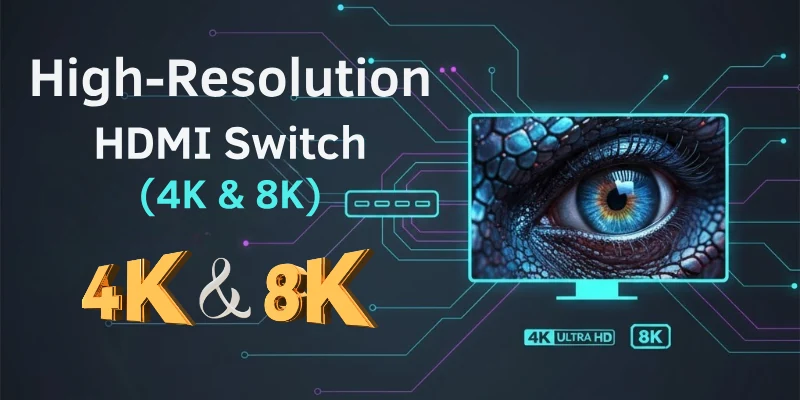
How Does It Work?
Here is how the high-resolution HDMI switch works:
- It connects many HDMI devices to one display.
- It supports high video resolutions like 4K (Ultra HD) or 8K (Super Ultra HD).
- It keeps video quality high without lag or loss.
- It also supports advanced features like HDR, Dolby Vision, and high refresh rates (based on model).
Power Requirement
High-resolution HDMI switch power requirements are:
- It needs external power to support high-quality signals.
- A power adapter is included.
- Power is needed for smooth and stable performance.
Number of Ports
The number of ports available in 4K/8K switches is:
- Usually 3 to 5 HDMI input ports
- One HDMI output port
- Some switches may offer more ports for professional use
Use Cases
High-resolution HDMI switches are best for:
- 4K and 8K TVs or monitors
- Gaming consoles like PS5, Xbox Series X
- 4K/8K streaming devices and Blu-ray players
- Home theater systems
Pros
The advantages of high-resolution HDMI switches are:
- Excellent picture quality
- Supports latest video and audio technologies
- Good for modern devices
- Ideal for gamers and movie lovers
Cons
Limitations of high-resolution HDMI switches are:
- Higher price than basic switches
- All devices and cables must support 4K/8K
- Requires good quality HDMI cables for best results
Which HDMI Switch is Best?
There is no one best HDMI switch for everyone. The best HDMI switch depends on your needs and setup. Different people need different features.
Here are some points to consider:
- Resolution Support: If you have a 4K or 8K TV, choose a switch that supports high-resolution video.
- Number of Ports: If you have many devices, choose a switch with more HDMI input ports.
- Remote Control: If you want easy switching from your seat, choose a switch with remote control.
- Automatic Switching: For quick and smart input change, an automatic HDMI switch is better.
- Audio Features: If you need special audio, go for a switch with Audio Extraction, Optical Audio Out, or ARC Support.
- Device Type Compatibility: Choose a switch with USB-C input for new laptops or tablets.
- EDID Management: If you face display or sound issues, use a switch with EDID Management.
- Budget: Manual switches are cheaper and good for simple setups.
Tip: Always check the compatibility of your devices, cables, and display before buying a switch.
Conclusion
In this article, we have discussed different types of HDMI switches in detail. From manual and automatic switches to advanced ones like ARC-supported, high-resolution, and USB-C input switches — each type has its own use and features.
Before choosing any HDMI switch, always check its features, pros, and cons. Pick the one that best fits your setup and needs. And don’t forget to check the next section — FAQs — to clear your common doubts and make a better decision.
FAQs
Here are some of the most commonly asked questions related to HDMI switchers types:
Most HDMI switches come with standard HDMI 1.4 or HDMI 2.0 ports. These versions support HD and 4K quality. Some may support HDMI 2.1 for high-end devices. It depends on the model and brand you choose.
There are three main types of HDMI switchers: manual, automatic, and HDMI matrix switchers.
- Manual switches require you to press a button to change the input.
- Automatic switches detect the active device and switch automatically.
- HDMI matrix switchers allow multiple inputs and multiple outputs at the same time.
An HDMI switch matrix is a device that supports multiple inputs and multiple outputs. You can connect many devices like laptops, consoles, or media players and display them on different screens.
An HDMI switch connects many devices to one screen. An HDMI splitter sends one device’s output to many screens. Switch = multiple inputs, one output. Splitter = one input, multiple outputs.
For home use, an automatic HDMI switch is usually the best choice. It switches between devices without pressing any button. It’s perfect for TVs, streaming devices, and game consoles.
Yes, there is a clear difference.
- A manual HDMI switch needs a button press to change devices.
- An automatic HDMI switch detects which device is active and switches by itself.

- Be Respectful
- Stay Relevant
- Stay Positive
- True Feedback
- Encourage Discussion
- Avoid Spamming
- No Fake News
- Don't Copy-Paste
- No Personal Attacks

- Be Respectful
- Stay Relevant
- Stay Positive
- True Feedback
- Encourage Discussion
- Avoid Spamming
- No Fake News
- Don't Copy-Paste
- No Personal Attacks


